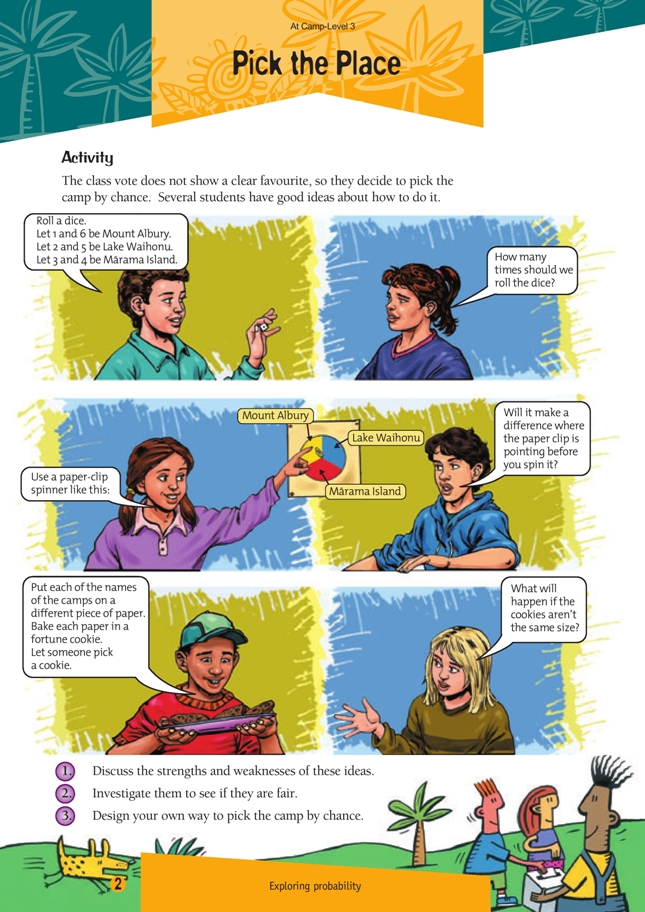This is a level 3 probability activity from the Figure It Out theme series.
A PDF of the student activity is included.
Click on the image to enlarge it. Click again to close. Download PDF (361 KB)
discuss if probability activities are fair
The ideas shown on this page illustrate different points about gathering data on a chance event. Rolling the dice is an unbiased method of choosing the camp. This means that the chances of each place being selected are the same. There are six faces that may come up, so each location has a two out of six or one-third chance of success. The response to the dice method concerns the effects of sample size. An
interesting discussion point is whether one throw, best of 10 throws, best of 100 throws, and so on will make any difference to the outcome. Students may note that one throw will always produce a winner.
The likelihood of each venue winning is the same, so there is no need to take more throws. An interesting experiment is to find out how often the best of 10 throws results in a winner other than the winner of the first throw.
Spinners are a geometric method to randomly generate outcomes. They involve quite complex ideas of fractional area and angles. However, spinners are easy to make and are excellent for finding probabilities by experiment. The only way to determine whether the starting point of the paper clip has any effect on outcomes is to try it. In this case, the sample size is important. For example, 30 spins from each given starting position will produce far more reliable results than five spins in each position.
There is potential bias in the fortune cookies method that students may like to discuss. How appetising the fortune cookies look and their size may have some impact on the likelihood of being selected.
Students could bake a batch of cookies of varying sizes to study this potential for bias further.
When students design their own method to pick the camp by chance, they will need to take account of the issues of bias and sample size. For example, they could put cubes of three different colours, one for each location, in a paper bag. Two issues are significant:
• equal numbers of each colour (to avoid bias)
• total number of cubes (a large enough sample size to give reliable results).
Answers to Activity
Answers will vary.
